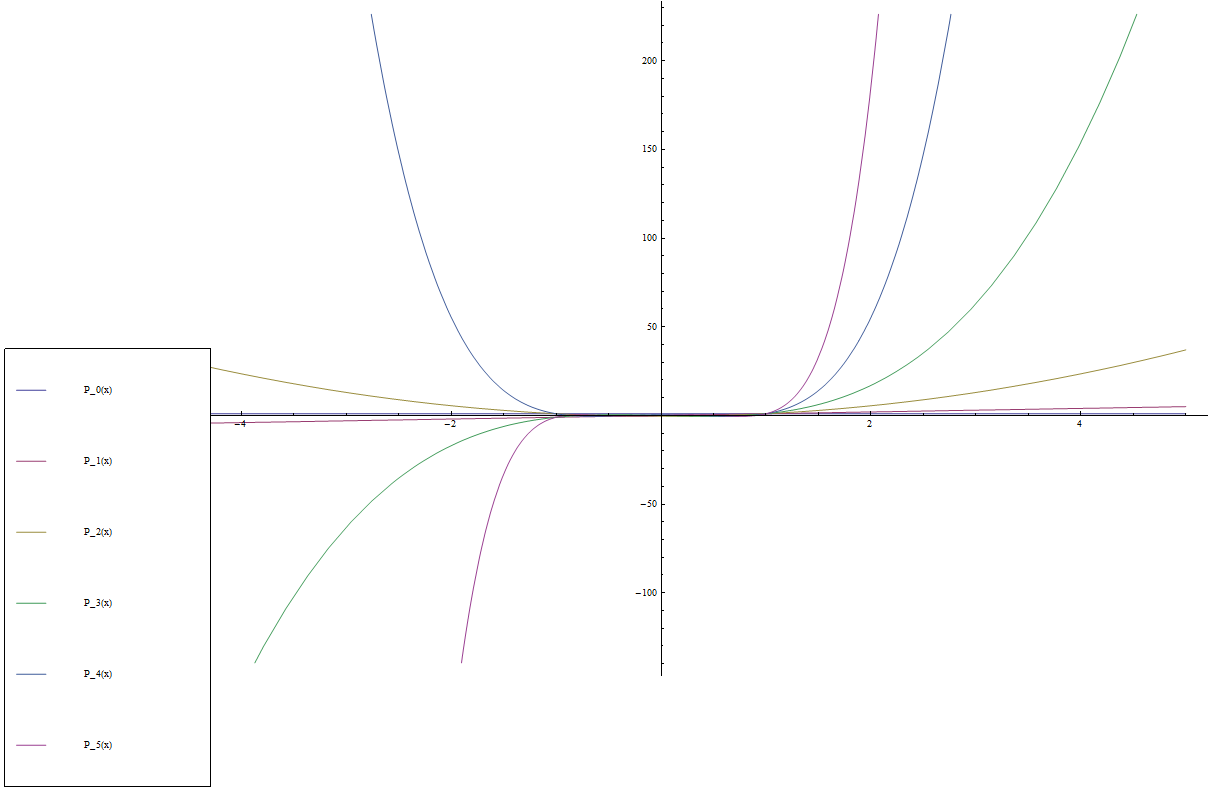Difference between revisions of "Legendre P"
From specialfunctionswiki
(→Properties) |
|||
| (One intermediate revision by the same user not shown) | |||
| Line 19: | Line 19: | ||
=Properties= | =Properties= | ||
| − | + | [[Relationship between Legendre polynomial and hypergeometric 2F1]]<br /> | |
| − | |||
| − | |||
| − | |||
| − | |||
| − | |||
| − | </ | ||
| − | + | {{:Orthogonal polynomials footer}} | |
| − | |||
| − | |||
| − | |||
| − | |||
| − | |||
| − | |||
| − | |||
| − | |||
| − | |||
| − | |||
| − | |||
| − | |||
| − | |||
| − | |||
| − | |||
| − | |||
| − | |||
| − | |||
| − | |||
| − | |||
| − | |||
| − | |||
| − | |||
| − | |||
| − | + | [[Category:SpecialFunction]] | |
Latest revision as of 01:43, 22 June 2016
The Legendre polynomials are orthogonal polynomials defined by the formula $$P_n(x) = \dfrac{1}{2^n} \displaystyle\sum_{k=0}^n {n \choose k}^2 (x-1)^{n-k}(x+1)^k.$$
$$\begin{array}{ll} P_0(x) &= 1 \\ P_1(x) &= x \\ P_2(x) &= \dfrac{1}{2}(3x^2-1) \\ P_3(x) &= \dfrac{1}{2}(5x^3-3x) \\ P_4(x) &= \dfrac{1}{8}(35x^4-30x^2+3) \\ P_5(x) &= \dfrac{1}{8}(63x^5-70x^3+15x) \\ \vdots \end{array}$$
Properties
Relationship between Legendre polynomial and hypergeometric 2F1
